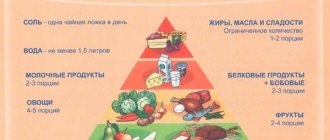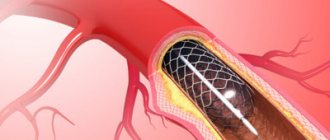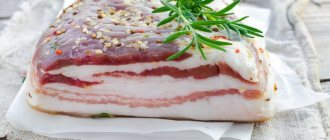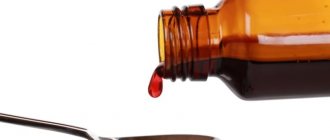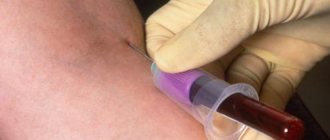Complex treatment of most diseases usually includes not only various medical procedures and medications, but also nutritional correction.
Mainly, monitoring the quality and volume of food intake helps restore the balance of substances necessary for the body, as well as replenish their deficiency, thus helping to speed up recovery. For the same reason, a diet for varicose veins is recommended for all patients. However, most likely you will have to follow it throughout your life.
The main goals of the diet for varicose veins include the following:
- Reducing the percentage of body fat (weight loss). Obesity leads to the deposition of cholesterol plaques in the walls of blood vessels. This process contributes to the worsening of the pathology. In addition, increasing body weight significantly increases the load on the heart, arteries and veins. These factors have an extremely negative impact on the state of blood flow.
- Strengthening vascular walls by enriching their cells with vitamins and microelements. With a deficiency of nutrients, capillary permeability increases, and consequently, venous tone is weakened. That is why nutrition for varicose veins should include foods rich in vitamins and microelements.
- Reduced blood viscosity. With a deficiency of water in the plasma, the heart and blood vessels weaken significantly and, as a result, their resistance decreases. The venous walls lose their previous tone to an even greater extent, which increases the risk of thrombotic clot formation. Therefore, the diet for people prone to varicose veins of the lower extremities is more aimed at combating dehydration.
- Relieving swelling of the limbs. This phenomenon does not occur only due to damage to the veins. One way or another, swelling is usually caused by fluid retention in the body. Power supply errors also play a big role here.
- Normalization of intestinal function. This important organ contains about 2.5 kg of beneficial microbes that affect the condition of the entire body. In addition, to eliminate one of the causes of pelvic varicose veins - stagnation of blood in the lower levels of the body, the prevention of constipation is extremely necessary.
Thus, if the diet for varicose veins satisfies all of the above goals, then the success of therapeutic measures increases significantly.
General rules
Varicose veins (VVEs) are based on valvular insufficiency of the peripheral superficial or deep veins. The term “varicose veins” is associated, as a rule, with pathological changes in the veins of the lower extremities of the veins, although the problem of varicose veins is much wider and there are other types of disease - varicose veins of the esophagus ( phlebectasia ), varicose veins of the rectum ( hemorrhoids ), pelvic varicose veins (varicose veins of the small pelvis), varicose veins of the female genital organs, varicocele (dilation of the veins of the spermatic cord).
In the complex treatment of varicose veins, especially in the early stages of the disease, conservative therapy, including medication, special exercises, massage and diet, becomes more important. As such, there is no standardized diet for venous insufficiency and diet is not used as an independent measure in the treatment of varicose veins, but as an auxiliary method, diet in combination with other measures gives a good effect and allows you to stop the progression of the disease. The diet for varicose veins in the legs should be aimed at:
- normalization of body weight;
- strengthening the walls of venous vessels;
- reducing blood viscosity to lower blood pressure and improve its trophic properties;
- Relieving swelling while meeting the body's fluid needs.
The diet for varicose veins of the legs is based on the principles of rational nutrition and does not provide for any strict restrictions. If the patient has increased body weight, then in such cases dietary nutrition should be aimed primarily at normalizing weight, since “extra pounds” place an increased load on the venous system of the lower extremities. For this purpose, a physiologically complete diet with a reduced calorie content (2300-2400 Kcal) is prescribed if the weight is slightly higher than normal or Dietary Table No. 8 according to Pevzner in the presence of obesity (1600-1700 Kcal).
The energy value of the diet is reduced due to easily digestible fats (mainly animal fats) and carbohydrates, with a physiologically normal protein content. Limits on fatty varieties of red meat, boiled and smoked sausages, goose meat, duck meat, canned meat, ham, cooking and animal fat, baked goods, confectionery products, mayonnaise, as well as heavy cream, cottage cheese, baked milk, sweet cheesecakes and yogurt, salty and fatty cheeses, fried chicken eggs, semolina and oatmeal, pasta, legumes, rice. Table salt, foods and dishes that stimulate the appetite, strong meat broths and free liquid are subject to restrictions.
At normal weight, the basis of the diet should be whole grains, vegetables, and fruits. They contain a fairly large amount of fiber, from which fibrous fibers are synthesized that strengthen the walls of the veins. In the diet, the consumption of fatty and fried foods, spicy and salty foods is limited, since the thirst they provoke causes excessive fluid intake, which causes an increase in blood volume and, accordingly, overload of the venous system. In addition, smoked, fried and spicy foods in large quantities negatively affect the rheological properties of blood (increase its viscosity), thereby increasing the risk of blood clots . In addition, food rich in cholesterol contributes to the development of atherosclerosis with the formation of atherosclerotic deposits on the walls of blood vessels and narrowing of their lumen.
Bell peppers, cabbage of various types, carrots, tomatoes, seasoned with any vegetable oil with the addition of garden herbs, saturate the body with vitamins and microelements, help improve elasticity and strengthen the walls of blood vessels. Jacket potatoes, sprouted grains of rye, oats, wheat, garlic, as well as black currants, gooseberries, rose hips and strawberries have a similar effect. The diet should include various porridges, beef liver, seaweed, nuts and dried fruits, rye bread, garlic, herbal infusions and green tea.
In order to strengthen the vascular endothelium of the leg veins and improve blood circulation, the diet should include foods containing organic flavonoids and antioxidants , which can prevent damage to the walls of venous vessels and increase their impermeability to fluid. Large amounts of these substances are found in berries, citrus fruits, apples, large-leaf green tea, as well as freshly squeezed juice from natural berries, fruits and vegetables. They are especially rich in rutin ( vitamin P ), which effectively reduces capillary fragility.
Flavonoids also reduce pain by blocking leukocyte aggression (inhibiting the process of adhesion and migration of neutrophil leukocytes ). Biologically active flavonoids ( isoquercetin and quercetin glucuronide ) contained in red grape leaves, as well as saponins contained in horse chestnut, have pronounced capillary-protective and anti-edematous effects. Dishes from these plants must be present in the diet - in the form of dolma, baked chestnuts.
It is recommended to limit the consumption of meat, replacing it with seafood (squid, crabs, mussels, shrimp, oysters) and fish. These products, along with beef liver, contain a lot of copper, which activates enzymes involved in the synthesis of an important component of the venous wall - elastin.
A prerequisite for proper nutrition for varicose veins of the lower extremities is limiting salt, which contributes to fluid retention in the body and limiting fluid intake (in the presence of edema ). It is the correctly selected drinking regime that serves to prevent blood clots. To increase efficiency, especially if you are overweight, you can arrange fasting days once every 2 weeks.
It is also recommended to include foods rich in magnesium in the menu, since a decrease in magnesium ions and an accumulation of calcium ions causes spasm of smooth muscle fibers and the appearance of cramps and pain. Foods high in magnesium include sesame seeds, pumpkin seeds, spinach, pine nuts, and wheat bran.
Long-term disruption of venous outflow often provokes the formation of blood clots in deep ( thrombosis ) or varicose veins affected by the saphenous veins ( thromphlebitis ). The diet for varicose veins and thrombophlebitis is not fundamentally different, however, it is additionally necessary to exclude from the diet foods containing vitamin K , which is an active component of the blood clotting process - beef/pork liver, spinach, beans, celery, cauliflower, watercress, kale , broccoli, seaweed. If you have already developed thrombophlebitis, it is recommended to include a mixture of garlic, onions, lemons and honey in your diet (100 g honey, 200 g onions, 50 g lemon, 100 g garlic) and take 1 tsp. 3 times a day. It is also recommended to take additional vitamins A , E , P and the vitamin preparation Ascorutin , dietary supplement Hawthorn forte .
Diet for varicose veins of the pelvis
Varicose veins of the small pelvis have recently become quite common. It is diagnosed in both women and men. But, nevertheless, according to statistics, women encounter this disease more often, a possible reason for this may be pregnancy and menopause. Thus, a therapeutic diet is often prescribed to pregnant women, due to the fact that only conservative therapy is indicated for them.
!
For pelvic varicose veins, special attention is paid to intestinal motility.
After all, if for some reason it slows down, then the entire body will be negatively affected. Nutrients will become worse absorbed, problems with defecation (Defecatio) will arise, etc. Therefore, it is very important to adhere to the above rules of food consumption and more often give preference to cereals and vegetables rich in fiber. Also, you should not eat bran and bread. Nutrition should be healthy and rational, containing the required amount of microelements, carbohydrates and proteins.
Authorized Products
The diet of a patient with varicose veins should include lean poultry (turkey, chicken), rabbit, lean beef, and beef liver.
All types of seafood (mussels, squid, crabs, oysters, shrimp) and fish, seaweed and other seaweed are extremely healthy.
The diet includes foods rich in unsaturated fatty acids - vegetable oils, nuts, flax seeds, cauliflower.
Vegetables and fruits are especially useful - bell peppers, tomatoes, carrots, zucchini, potatoes, garden herbs, sauerkraut, which can be consumed in various forms, both separately and in salads, as well as berries and fruits - apples, apricots, citrus fruits, cherry, black currant.
It is useful to include various grains in the diet, both in the form of porridges and breads.
Low-fat cottage cheese and fermented milk products are recommended for dairy products.
The bread is whole grain.
To saturate the body with fluid, it is recommended to drink mineral still water, juices, green, fruit or herbal tea, fruit drinks, jelly, and compotes.
Table of permitted products
| Proteins, g | Fats, g | Carbohydrates, g | Calories, kcal | |
Vegetables and greens | ||||
| boiled cauliflower | 1,8 | 0,3 | 4,0 | 29 |
| canned grape leaves | 4,3 | 2,0 | 11,7 | 69 |
| carrot | 1,3 | 0,1 | 6,9 | 32 |
| cucumbers | 0,8 | 0,1 | 2,8 | 15 |
| salad pepper | 1,3 | 0,0 | 5,3 | 27 |
| boiled beets | 1,8 | 0,0 | 10,8 | 49 |
| tomatoes | 0,6 | 0,2 | 4,2 | 20 |
| dill | 2,5 | 0,5 | 6,3 | 38 |
| garlic | 6,5 | 0,5 | 29,9 | 143 |
Fruits | ||||
| apricots | 0,9 | 0,1 | 10,8 | 41 |
| oranges | 0,9 | 0,2 | 8,1 | 36 |
| cherry | 0,8 | 0,5 | 11,3 | 52 |
| grapefruit | 0,7 | 0,2 | 6,5 | 29 |
Berries | ||||
| cranberry | 0,5 | 0,0 | 6,8 | 26 |
| gooseberry | 0,7 | 0,2 | 12,0 | 43 |
| Rowan | 1,5 | 0,1 | 10,9 | 50 |
| currant | 1,0 | 0,4 | 7,5 | 43 |
| rose hip | 1,6 | 0,0 | 14,0 | 51 |
Nuts and dried fruits | ||||
| dried apricots | 5,2 | 0,3 | 51,0 | 215 |
| prunes | 2,3 | 0,7 | 57,5 | 231 |
Cereals and porridges | ||||
| buckwheat (kernel) | 12,6 | 3,3 | 62,1 | 313 |
| cereals | 11,9 | 7,2 | 69,3 | 366 |
| Wheat groats | 11,5 | 1,3 | 62,0 | 316 |
Bakery products | ||||
| whole grain bread | 10,1 | 2,3 | 57,1 | 295 |
Confectionery | ||||
| jam | 0,3 | 0,1 | 56,0 | 238 |
Raw materials and seasonings | ||||
| honey | 0,8 | 0,0 | 81,5 | 329 |
Dairy | ||||
| kefir 3.2% | 2,8 | 3,2 | 4,1 | 56 |
| sour cream 15% (low fat) | 2,6 | 15,0 | 3,0 | 158 |
Cheeses and cottage cheese | ||||
| cottage cheese | 17,2 | 5,0 | 1,8 | 121 |
Meat products | ||||
| lean pork | 16,4 | 27,8 | 0,0 | 316 |
| beef | 18,9 | 19,4 | 0,0 | 187 |
| beef liver | 17,4 | 3,1 | 0,0 | 98 |
| calf liver | 19,2 | 3,3 | 4,1 | 124 |
| mutton | 15,6 | 16,3 | 0,0 | 209 |
| rabbit | 21,0 | 8,0 | 0,0 | 156 |
| beef stew | 14,1 | 17,4 | 0,0 | 214 |
Bird | ||||
| chicken liver | 20,4 | 5,9 | 1,4 | 140 |
| turkey | 19,2 | 0,7 | 0,0 | 84 |
| turkey liver | 19,5 | 22,0 | 0,0 | 276 |
| goose liver | 15,2 | 39,0 | 0,0 | 412 |
Eggs | ||||
| chicken eggs | 12,7 | 10,9 | 0,7 | 157 |
Fish and seafood | ||||
| brown algae | 1,7 | 0,6 | 8,3 | 43 |
| pink salmon | 20,5 | 6,5 | 0,0 | 142 |
| Red caviar | 32,0 | 15,0 | 0,0 | 263 |
| cod roe | 24,0 | 0,2 | 0,0 | 115 |
| pike caviar | 17,3 | 2,0 | 0,0 | 87 |
| squid | 21,2 | 2,8 | 2,0 | 122 |
| shrimps | 22,0 | 1,0 | 0,0 | 97 |
| salmon | 19,8 | 6,3 | 0,0 | 142 |
| mussels | 9,1 | 1,5 | 0,0 | 50 |
| seaweed | 0,8 | 5,1 | 0,0 | 49 |
| herring | 16,3 | 10,7 | — | 161 |
| cod (liver in oil) | 4,2 | 65,7 | 1,2 | 613 |
| trout | 19,2 | 2,1 | — | 97 |
Oils and fats | ||||
| vegetable oil | 0,0 | 99,0 | 0,0 | 899 |
| butter | 0,5 | 82,5 | 0,8 | 748 |
| olive oil | 0,0 | 99,8 | 0,0 | 898 |
| * data is per 100 g of product | ||||
Video: nutrition for varicose veins - what is possible, what is not
is not responsible for the accuracy of the information presented in this video clip. Source – Vascul Clinic Group
Sources:
- Rymashevsky N.V. and others. Varicose veins and recurrent phlebitis of the pelvis in women. – Rostov-on-Don, 2000. – 163 p.
- Tsukanov Yu.T., Tsukanov A.Yu., Vasilevich V.V. Orthostasis-dependent phlebopathy of the lower half of the body as a vascular effect of connective tissue dysplasia // Mater. 1 All-Russian scientific-practical conf. “Current issues of internal pathology. Connective tissue dysplasia." – Omsk, 2005.
- Yushchenko A.N. Varicose veins of the small pelvis: a casuistry or a common disease? // News of medicine and pharmacy.–2005. – No. 9 (169)
- Dultsev Yu. V., Titov A. Yu., Kamenetskaya T. M., Korneva T. K. et al. Methods of treating varicose veins // Surgery, 2013.
- Diet for varicose veins. Potapova M.V.
- https://www.sibmedport.ru/article/3933-pitanie-pri-varikoznoy-bolezni/
- FLAVONOIDS OF MEDICINAL PLANTS: PREDICTION OF ANTIOXIDANT ACTIVITY. Kurkin V.A., Poroikov V.V., Kurkina A.V., Avdeeva E.V., Pravdivtseva O.E. // Modern problems of science and education. – 2015. – No. 2.
- https://www.medicalnewstoday.com/articles/321562.php
- https://top-diet.com/diet-for-varicose-veins-2/
- https://www.healthyandnaturalworld.com/improve-varicose-veins-naturally/
For an accurate diagnosis, contact a specialist.
Fully or partially limited products
Strong meat broths, fatty varieties of red meat, goose meat, duck meat, boiled and smoked sausages, canned meat, bacon, ham, cooking and animal fat, mayonnaise, baked goods, confectionery, as well as heavy cream, cottage cheese, sweets are excluded from the diet. cheesecakes and yogurt, baked milk, fried chicken eggs, salty and fatty cheeses, semolina and oatmeal, pasta, legumes, white rice.
Table salt and salty foods, dishes, spices and seasonings that stimulate the appetite are subject to restrictions.
Limit the consumption of coffee and black tea.
The consumption of smoked meats, marinades, and alcohol-containing drinks is not allowed.
Table of prohibited products
| Proteins, g | Fats, g | Carbohydrates, g | Calories, kcal | |
Cereals and porridges | ||||
| wheat bran | 15,1 | 3,8 | 53,6 | 296 |
Confectionery | ||||
| cake | 3,8 | 22,6 | 47,0 | 397 |
Cakes | ||||
| cake | 4,4 | 23,4 | 45,2 | 407 |
Chocolate | ||||
| chocolate | 5,4 | 35,3 | 56,5 | 544 |
Raw materials and seasonings | ||||
| mayonnaise | 2,4 | 67,0 | 3,9 | 627 |
Dairy | ||||
| milk | 3,2 | 3,6 | 4,8 | 64 |
| cream 35% (fat) | 2,5 | 35,0 | 3,0 | 337 |
| sour cream 30% | 2,4 | 30,0 | 3,1 | 294 |
Cheeses and cottage cheese | ||||
| cheese | 24,1 | 29,5 | 0,3 | 363 |
Meat products | ||||
| fried pork | 11,4 | 49,3 | 0,0 | 489 |
| pork fat | 1,4 | 92,8 | 0,0 | 841 |
| bacon | 23,0 | 45,0 | 0,0 | 500 |
Sausages | ||||
| smoked sausage | 28,2 | 27,5 | 0,0 | 360 |
Bird | ||||
| duck | 16,5 | 61,2 | 0,0 | 346 |
| goose | 16,1 | 33,3 | 0,0 | 364 |
Fish and seafood | ||||
| fried fish | 19,5 | 11,7 | 6,2 | 206 |
Oils and fats | ||||
| cooking fat | 0,0 | 99,7 | 0,0 | 897 |
| rendered pork fat | 0,0 | 99,6 | 0,0 | 896 |
Alcoholic drinks | ||||
| white dessert wine 16% | 0,5 | 0,0 | 16,0 | 153 |
| vodka | 0,0 | 0,0 | 0,1 | 235 |
| cognac | 0,0 | 0,0 | 0,1 | 239 |
| liquor | 0,3 | 1,1 | 17,2 | 242 |
| beer | 0,3 | 0,0 | 4,6 | 42 |
Non-alcoholic drinks | ||||
| cola | 0,0 | 0,0 | 10,4 | 42 |
| coffee | 0,2 | 0,0 | 0,3 | 2 |
| Pepsi | 0,0 | 0,0 | 8,7 | 38 |
| black tea | 20,0 | 5,1 | 6,9 | 152 |
| energy drink | 0,0 | 0,0 | 11,3 | 45 |
| * data is per 100 g of product | ||||
Sample menu
Monday
- First breakfast: low-fat cottage cheese with dried apricots or other dried fruit of your choice;
- Second breakfast: smoothie based on fresh fruits;
- Lunch: stewed vegetables as a side dish + boiled fish of any kind;
- Dinner: vegetable salad with vegetable oils of your choice;
- Second dinner: meat cutlet with steamed vegetables.
Tuesday
- First breakfast: cheesecakes cooked in a double boiler + 1 tablespoon of honey;
- Second breakfast: whipped fruits/berries with skim milk;
- Lunch: kefir okroshka with chicken fillet + potato casserole;
- Dinner: grated carrot/apple salad, seasoned with low-fat sour cream or natural yogurt;
- Second dinner: side dish of stewed cabbage + 100-150 grams of boiled chicken breast.
Wednesday
- First breakfast: “Friendship” porridge with skim milk with the addition of dried plums;
- Second breakfast: a glass of kefir with berry filling (raspberries, strawberries, blackberries);
- Lunch: buckwheat soup + tomatoes stuffed with chicken fillet + a piece of black bread;
- Dinner: fruit mix with yogurt dressing;
- Second dinner: steamed fish with vegetables.
Thursday
- First breakfast: buckwheat porridge with milk;
- Second breakfast: apple or pear with honey (can be baked);
- Lunch: vegetable soup + vegetarian casserole;
- Dinner: cabbage salad with olive oil + a piece of black bread;
- Second dinner: boiled rice + steamed quenelles (2-3 hours before bedtime).
Friday
- First breakfast: oatmeal with dried fruits;
- Second breakfast: steamed vegetable cutlet with sour cream;
- Lunch: pilaf with lean meat (turkey, chicken breast) + pickle;
- Dinner: low-fat cottage cheese with the addition of 1 tablespoon of honey;
- Second dinner: vegetable stew with chicken.
On weekends you can combine dishes. Thus, over time, an understanding of the basics of proper nutrition should be built. As a result, there will be no problems with choosing products. Listed below are several more healthy dishes for a diet for varicose veins:
- millet porridge with berries;
- vegetarian borscht + steamed fish;
- Greek salad;
- boiled chicken breast with buckwheat porridge;
- steamed fruit dumplings;
- 2 egg omelet with vegetables + chicken broth;
- meat cutlet with a small amount of pasta (exclusively made from durum wheat).
Reviews and results
- “... After the second birth, my problems with the veins of my legs began. At first small bumps appeared, and then pain. Now we have a complete picture of legs disfigured by varicose veins. The phlebologist suggests laser surgery, but I’m hesitant about it yet. I take all the medications prescribed by the doctor, wear compression stockings, low-heeled shoes, and go on a diet as recommended by the doctor. I just don't know if this will help or not. I wouldn’t like to undergo surgery”;
- “... I have been suffering from varicose veins on my legs for almost 10 years. Varicose veins appeared after hard work in a mine. I have already tried almost all ointments, physiotherapy, special stockings and of course medications. I try to eat right, quit smoking and drinking alcohol. So far we have managed to avoid surgery.”
Examples of dishes from the recommended menu
Millet porridge baked in the oven is incredibly tasty, healthy, and most importantly easy to prepare To prepare it, you need to take an iron saucepan, pour washed millet (about 1 glass) into the bottom, add salt, and pour three glasses of low-fat milk over everything. Bake the dish over medium heat until a golden brown crust appears on the surface of the porridge. You can diversify the dish by adding dried fruits, berries, and honey.
An omelette with vegetables and herbs is a hearty protein product that is also easy to prepare in any kitchen. Break 2 eggs into a small bowl, add 100 milliliters of milk, then beat the resulting mixture. Separately chop the fresh vegetables and herbs available in the refrigerator. Tomatoes, bell peppers, zucchini, parsley, onions, dill, basil and others work well.
A small amount of assorted vegetables should be added to the eggs. Salt the dish and stir. Carefully pour the mixture into a preheated frying pan, greased with a small amount of olive oil, and simmer over medium heat under a closed lid for 15-20 minutes. You can serve the omelette with tomato sauce.
Healthy drinks
A diet for varicose veins involves taking large amounts of fluid. The healthiest drinks:
- green tea;
- natural fruit and vegetable juices;
- fruit drinks from berries;
- compotes;
- ginger tea;
- herbal teas (currant leaf, mint, lemon balm);
- ordinary still water;
- apple cider vinegar drink.
Apple Cider Vinegar Drink Recipe
Add 2 tablespoons of apple cider vinegar and honey to taste to a glass of warm water, stir well. Take during the day after meals.
Ginger tea recipe
Pour four tablespoons of chopped ginger and the zest of one lemon into a liter of boiling water, cover with a lid, let it brew for half an hour, cool to a comfortable temperature, add honey to taste.
